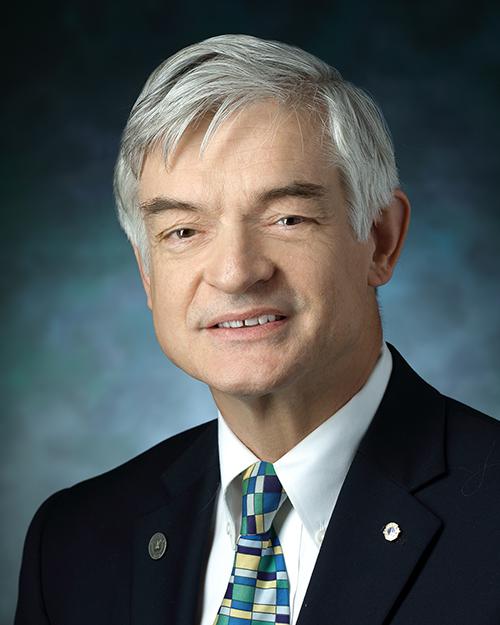Research Lab Results
-
Dagnelie Ultra Low Vision Lab
The Ultra Low Vision Lab is interested in assessing and enhancing the functional visual abilities of individuals with ultra-low vision. The lab uses psychophysical experiments to investigate innovative methods for improving visual prostheses. -
Pablo Iglesias Lab
Investigators in the Pablo Iglesias Lab use analytic tools from control systems and dynamical systems to study cell biology, including biological signal transduction pathways. Our research interests include the ways cells interpret directional cues to guide their motion, regulatory mechanisms that control cell division, and the sensing and actuation that enable cells to maintain lipid homeostasis. -
Ed Connor Laboratory
The Connor Laboratory focuses on understanding the neural algorithms that make object vision possible. The goal of our research is to explain the neural basis of visual experience and contribute to designs for more powerful machine vision systems and brain-machine interfaces.
-
King-Wai Yau Laboratory
The King-Wai Yau Laboratory is interested in the area of sensory transduction. Specifically, we study visual and olfactory transductions, which are the processes by which the senses of vision and olfaction are initiated. Rods and cones are the retinal photoreceptors that absorb light for initiating image vision. We are studying the cellular and molecular details underlying rod and cone phototransduction. -
Hey-Kyoung Lee Lab
The Hey-Kyoung Lee Lab is interested in exploring the cellular and molecular changes that happen at synapses to allow memory storage. We use various techniques, including electrophysiological recording, biochemical and molecular analysis, and imaging, to understand the cellular and molecular changes that happen during synaptic plasticity. Currently, we are examining the molecular and cellular mechanisms of global homeostatic synaptic plasticity using sensory cortices as model systems. In particular, we found that loss of vision elicits global changes in excitatory synaptic transmission in the primary visual cortex. Vision loss also triggers specific synaptic changes in other primary sensory cortices, which we postulate underlies sensory compensation in the blind. One of our main research goals is to understand the mechanisms underlying such cross-modal synaptic plasticity. We are also interested in elucidating the events that occur in diseased brains. In collaboration with other researchers, we are analyzing various mouse models of Alzheimer's disease, especially focusing on the possible alterations in synaptic plasticity mechanisms.
-
The Swenor Research Group
The Swenor Research Group focuses on examining the interrelationship between vision loss and aging. This includes determining the effects of visual impairment and eye disease on physical and cognitive functioning in older adults, and identifying interventions that could enhance the health of older adults with visual impairment and eye disease.
-
Systems Neurobiology Laboratory
The Systems neurobiology Laboratory is a group of laboratories that all study various aspects of neurobiology. These laboratories include: (1) computational neurobiology Laboratory: The goal of their research is to build bridges between brain levels from the biophysical properties of synapses to the function of neural systems. (2) computational Principles of Natural Sensory Processing: Research in this lab focuses on the computational principles of how the brain processes information. (3) Laboratory for Cognitive neuroscience: This laboratory studies the neural and genetic underpinnings of language and cognition. (4) Sloan-Swartz Center for Theoretical neurobiology: The goal of this laboratory is develop a theoretical infrastructure for modern experimental neurobiology. (5) Organization and development of visual cortex: This laboratory is studying the organization and function of neural circuits in the visual cortex to understand how specific neural components enable visual perception and to elucidate the basic neural mechanisms that underlie cortical function. (6) Neural mechanism of selective visual attention: This laboratory studies the neural mechanisms of selective visual attention at the level of the individual neuron and cortical circuit, and relates these findings to perception and conscious awareness. (7) Neural basis of vision: This laboratory studies how sensory signals in the brain become integrated to form neuronal representation of the objects that people see.
-
Alfredo Kirkwood Laboratory
Research in the Alfredo Kirkwood Laboratory is directed toward elucidating the basic mechanisms by which visual experience can modify cortical connections in the visual cortex and how those mechanisms are regulated. In visual cortical slices, we investigate two forms of activity-dependent synaptic plasticity: long-term potentiation (LTP) and long-term depression (LTD). These two forms of synaptic plasticity are currently the most comprehensive models of the elementary mechanisms underlying naturally occurring plasticity. We are currently focused on how synaptic inhibition and the action of neuromodulators regulate the induction of LTP and LTD during development. We hope to gain a better understanding of how naturally occurring plasticity is regulated. -
Kristina Nielsen Laboratory
The Kristina Nielsen Laboratory investigates neural circuits in the visual cortex that are responsible for encoding objects to understand how the visual system performs object recognition. We aim to reveal the fine-scale organization of neural circuits, with an emphasis on higher-level visual areas. We use two-photon microscopy to perform high-resolution functional imaging of visual areas in the non-human primate. We also investigate how the function of higher visual areas changes over the course of brain development in ferrets, by measuring the activity of single neurons in these areas, as well as determining the animal's visual capabilities at various developmental stages. In both types of investigations, we also rely on detailed anatomical techniques to precisely observe how the function of neuronal circuits is related to their structure. -
Marshall Shuler Laboratory
The Marshall Shuler Laboratory aims to understand the means by which brain reward systems convey reward value, expectancy, quality, probability and utility, and the rules by which such activity is used to affect synaptic weight within brain networks to encode stimulus-action associations. We use an interdisciplinary approach combining multisite recordings of neural activity, targeted pharmacological manipulation, viral-mediated gene transfer and behavior to study the neural mechanisms of reward-based interval learning in the primary visual cortex.



